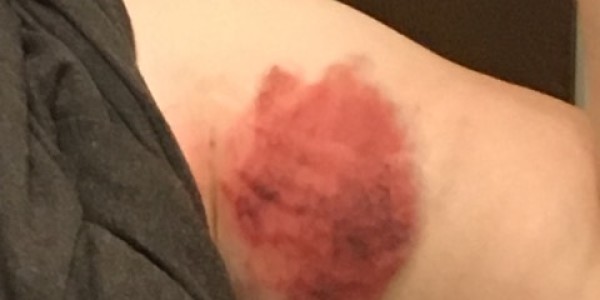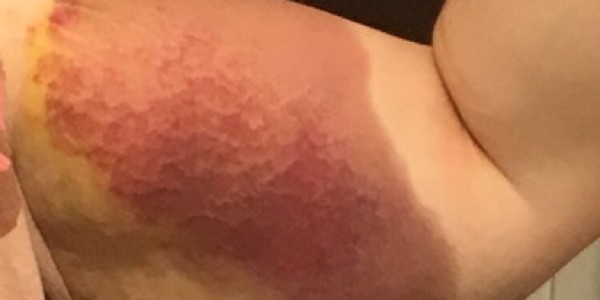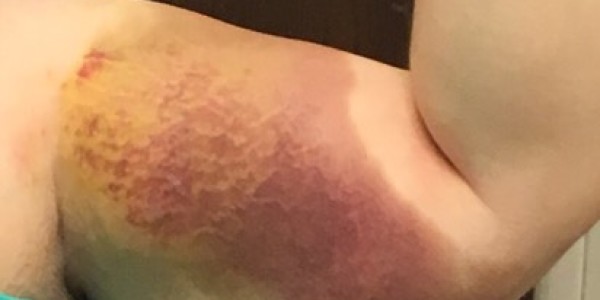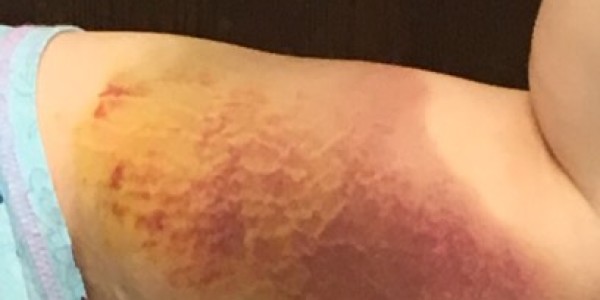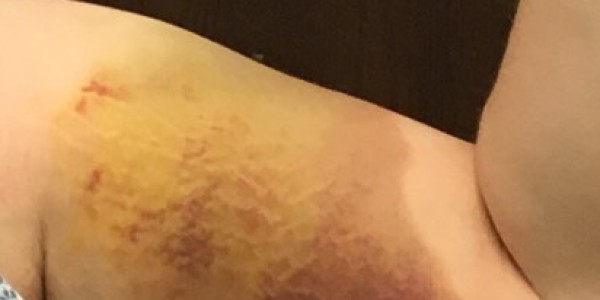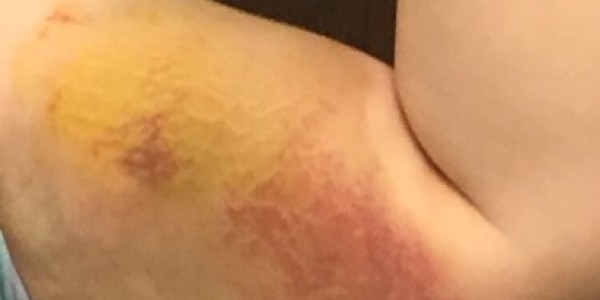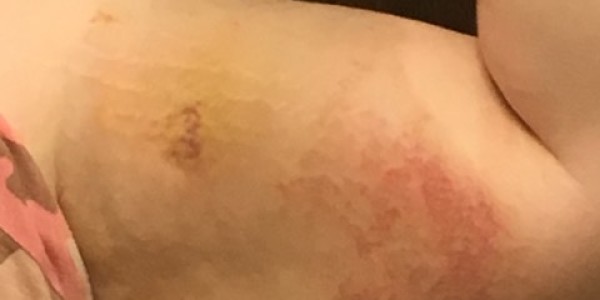In the current world we live in people often want to see proof that techniques, workouts, nutrition, etc actually do what companies claim they do. I live in that world. I am science based regarding my philosophy of how I work with my clients. I read as much research as I can about different techniques, modalities and claims in the world of manual therapy. This often presents a conundrum for massage therapists. We have some research that supports what massage therapy does but quite often I am working off of case studies and anecdotal evidence with my own clients. I take 18 years of clinical experience with the best assessment I can make to then create a treatment plan that I feel will help facilitate healthy change in soft tissue dysfunction.
This month I want to talk about soft tissue trauma involving acute injuries and how massage therapy can help in the healing process. I’m going to present a case study I had with a client in autumn of 2019.
What are soft-tissue injuries?
Soft-tissue injuries result from mechanical forces that overwhelm the strength and resilience of the tissue(s). Soft tissue can be affected as it compresses, stretches, tears, breaks or chips. (Whitney Lowe – Orthopedic Assessment in Massage Therapy)
In my practice I most often see two primary injuries associated with acute trauma to soft tissue. One is overstretched, torn tissue often associated with whiplash action or a fall. This would be a client that was in an auto accident, skiing accident or grabbed on to a railing while falling and suffered a shoulder injury. These are just a few examples of where one might experience overstretched, strained or sprained soft tissue. (Side note, muscles become strained and ligaments are sprained)
A second type of acute injury would be blunt force trauma. A person falls off a bicycle or slips on ice and they have a black and blue contusion. This is classic inflammation, it is often discolored, painful, swollen and might even be warm to the touch. Even one of those symptoms classifies it as inflammation but with acute trauma all four cardinal signs of inflammation may be present.
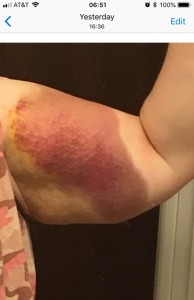
There is a third type of acute trauma that I want to touch on as well. This would be categorized by me as “planned acute trauma.” Who would want intentional trauma you might ask? Well, any surgery is going to involve tissue trauma and likely subsequent local injury and inflammation.
How does massage therapy help?
Quite often clients and even medical professionals don’t know about or forget about the impact massage therapy can have with acute trauma to soft tissue. Mainly this is because few people really want to be touched in any way following acute trauma. I experienced this first hand a few months ago after my wife had a total knee replacement. Even though she knows about massage therapy and obviously knows what I do, she was very reluctant to allow me to place my hands on her knee even weeks after her surgery. This was interesting because I’ve worked on quite a few clients that have had joint replacements in my 18 years of practicing Orthopedic Massage. Gratefully, she relented and I was able to help reduce local inflammation at her surgical site and reduce the scar tissue that resulted from her surgery.
However, the techniques used with acute trauma (I’m talking perhaps hours or days after an incident) are not your general massage techniques. Specifically I use a technique called Lymphatic Drainage. I am trained only to use this technique in regard to soft tissue injury. And I only use it when it is appropriate for the situation. (There are therapists that do amazing work with Lymphatic Drainage to help with Lymphedema in regard to people that have had lymph nodes removed such as cancer survivors, but I do not do that kind of work as it is outside my scope of practice)
A few months ago I had a regular (twice monthly) client that came in for her regular massage. As soon as she sat down I noticed a large area of bruising on her right upper arm. She told me what happened about 48 hours prior that caused the injury. Now, this client has been seeing me for over 13 years and has received over 150 massages from me. Obviously she trusts me and we have a very good client/therapist relationship.
I asked her if she would permit me to do some Lymphatic Drainage on her injury? I explained what it involved and that it would take away some time from her normal 60 minute massage but that I felt it would be very helpful. I’ve created a slide show below that shows the effects of the work.
What is the problem with swelling/edema?
Inflammation gets a bad rap these days. Inflammation is part of the body’s way of healing itself. After inflammation, repair and then remodeling of soft tissue occurs. Swelling is the accumulation of waste at the end of the inflammatory cycle that has not yet been evacuated. The problem is not the swelling but the accumulation of damaged cells and fluid that has not found its way out of the injured area. Because the lymph system is passive (it works when we move and contract musculature) and typically we don’t want to move after an injury, this fluid accumulates and pools. A person needs to move a swollen ankle, for example, but they can’t because there is so much swelling the joint is constricted. Using Lymphatic Drainage techniques are helpful because it jump starts the lymphatic system decreasing the swelling so the joint can be moved more easily, either passively or actively.
It works fast!
Lymphatic Drainage is a feather light technique and affects the Lymphatic circulatory system. (I’m not going to go into the physiology of the technique because this post is intended for the education of clients and the general public) In fact the technique is so light and benign that I often end up apologizing to the client and educating them about what and why we’re employing the technique. The reasons are to reduce local inflammation and move the lymphatic fluid along so it can clean up the damaged tissue. The beauty of the technique is that it works fast (you can often see results by the end of the massage) and it continues to work after the client leaves my office.
Seeing is Believing
As you can see below at 12 and 24 hours after leaving my office the client continued to see improvement in the bruising. After 72 hours there was little discoloration remaining at the site of injury, whereas the client was concerned she would have this bruise for weeks. The client had local pain but didn’t have serious injury to the biceps brachii muscle itself. Click on individual images to see a larger version of each one.
What about damaged soft-tissue that is not showing a bruise?
For many people, they may incur an injury but you cannot see the damage. However, they may experience pain (a symptom, not the problem), restricted range of motion and/or lack of mobility. They know something is wrong but they don’t know what.
If you have suffered a serious injury involving what you think is more than soft-tissue damage (i.e. a fractured or broken bone or internal organ damage) you should see a doctor as soon as possible. But quite often, after seeing a doctor, they may diagnose it as a muscle strain or ligament sprain. At this point making a visit to see someone that practices lymphatic drainage would be a positive move.
The session proceeds much differently than people might think. I take the time to explain what is happening (inflammation to damaged tissue) and that I’ll be using a feather light technique to help the body’s lymphatic system function effectively. I’ll do some other very light techniques and generally help make the client calm, taking them into a “rest and relax” state and out of a “fight or flight” response. A few days later I may ask the client to come back so we can re-assess the damaged area and then use other techniques to restore mobility and range of motion to an area. But the sooner someone gets looked at the better. I’ve had clients that have taken pretty good falls skiing or been in motor vehicle accidents where the body healed quickly because the body was put in a position to heal, which is what is always want to do. The body does not want to self-destruct.
Conclusion
Lymphatic Drainage techniques are used only when necessary. You may get hundreds of massages and never experience what it is like. But, if you should suffer an acute soft-tissue injury it would be a viable technique to use. Don’t wait for things to “just get better”, instead, at the very least, get evaluated and have a professional in the medical field determine whether there is an acute injury and then an assessment that gets you on the path to healing. Lymphatic Drainage is often the technique that will begin that process of recovery.

